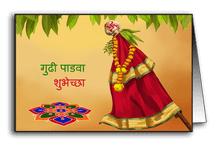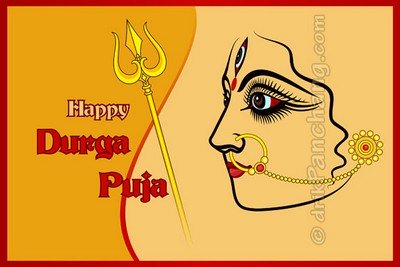













Notes: All timings are represented in 12-hour notation in local time of Columbus, United States with DST adjustment (if applicable).
Hours which are past midnight are suffixed with next day date. In Panchang day starts and ends with sunrise.
Our religious books have split opinion on the timing of Navratri Parana. In religious texts two different opinions exist on the timings of breaking Navratri fast. The first opinion advises to do Navratri Parana within Navami Tithi and the second opinion advises to do Navratri Parana on Dashami Tithi only after Navami Tithi is over.
Most of the devotees in North India, especially female devotees with family, either break Navratri fast on Ashtami or Navami after doing Kanya Puja. Depending on family traditions followed since generations, Kanya Puja which is also known as Kumari Puja is done either on Maha Ashtami or Maha Navami Puja day during Navratri. In many years Maha Ashtami and Maha Navami Puja falls on the same day and fast is broken on Ashtami Tithi only after Kanya Puja. For those who follow this tradition, there is no need to look for Navratri Parana Muhurat as those devotees would break the fast before noon after finishing Kanya Puja either on Maha Ashtami or Maha Navami Puja day.
It should be noted that this tradition doesn't follow the principle of nine-nights fasting during Navratri. Because, in those families who worship Ashtami Tithi, the fasting would be observed only for seven nights and for those families who worship Navami Tithi, the fasting would be observed only for eight nights. This tradition rather makes sure that Navratri fasting is broken within Navami Tithi and avoids Navratri Parana on Dashami Tithi or on the day when Navami Tithi is conjoined with Dashami Tithi.
In many families, rather observing Navratri fasting for nine days, it is observed for two days. The first fasting is observed on the first day of Navratri and the second fasting is observed either on Saptami or Ashtami depending on the tradition of culminating Navratri worship on Maha Ashtami or Maha Navami day. In other words, the second fasting is done one day before of last worshipping day. For those who follow this tradition, there is no need to look for Navratri Parana Muhurat.
In many families, Navami Homa is done during Navratri. Navratri Homa or Navratri Havan is considered more significant when Navami Tithi is prevailing and it is performed during day time only. It takes about four hours to perform a minimum ritualistic Chandi Havan. Keeping all these constraints for doing a Homa, Navratri fasting is broken when Homa as well as Navami Tithi is over.
If Navami Tithi is getting over before sunset then fast is broken on the same day when Navami Tithi is over and Dashami Tithi is prevailing. If Navami Tithi is getting over after sunset then Navratri Parana is postponed for the next day and Navratri fast is broken after sunrise on the next day. This tradition makes sure that Navratri fasting is observed for nine-nights unless Navami Tithi is getting over before sunset. If Navami Tithi is getting over before sunset then fasting would end on the same day and fasting would be observed for eight nights only. But this tradition follows the rule mentioned is prestigious Nirnaya-Sindhu that Navratri Parana should be done on Dashami Tithi after Navami Tithi is over.
As per Nirnaya-Sindhu,
अथ नवरात्रपारणानिर्णयः। सा च दशम्यां कार्या॥
the Navratri Parana is done when Navami Tithi is over and Dashami Tithi prevails. As the book mentions, Navratri fasting has been suggested from Pratipada to Navami and to follow this guideline Navratri fasting should be observed throughout Navami Tithi.
Drik Panchang Navratri Parana time to break fasting is based on the rules mentioned in Nirnaya-Sindhu. In few families, Navratri Parana is done after Durga Visarjan which is done while Dashami Tithi prevails. Hence, for those who follow this tradition should break Navratri fasting after Durga Visarjan. Durga Visarjan Time lists Muhurat for Visarjan which can be used for Navratri Parana.